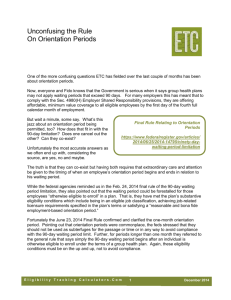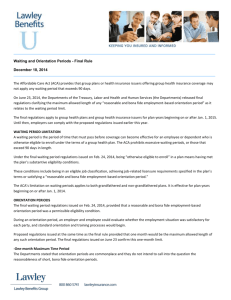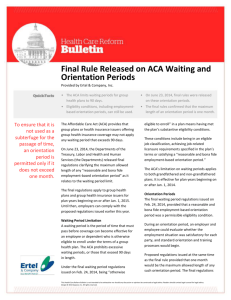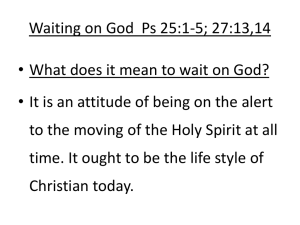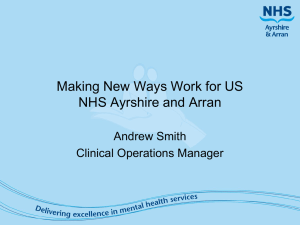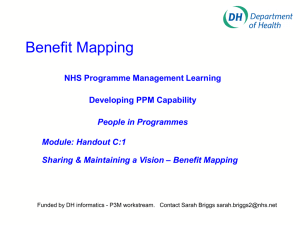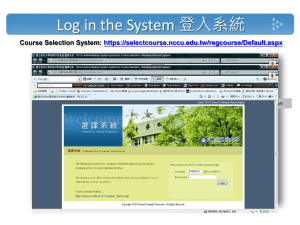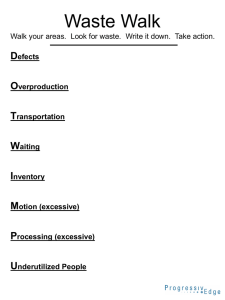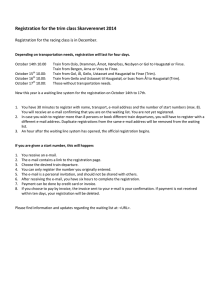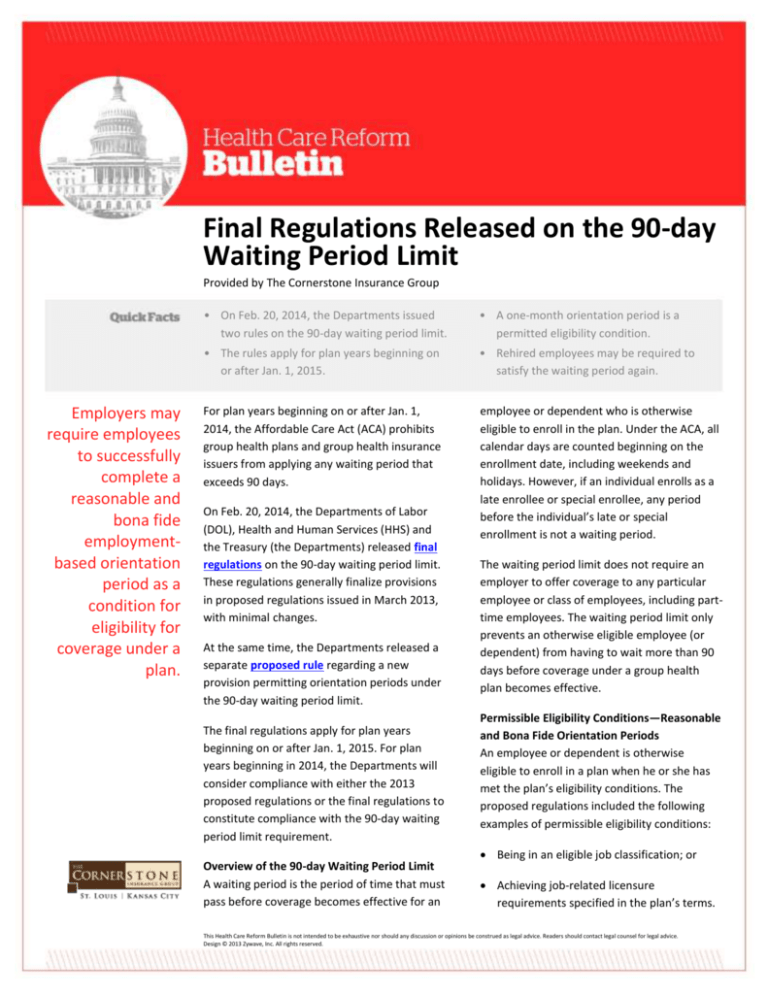
Final Regulations Released on the 90-day
Waiting Period Limit
Provided by The Cornerstone Insurance Group
Employers may
require employees
to successfully
complete a
reasonable and
bona fide
employmentbased orientation
period as a
condition for
eligibility for
coverage under a
plan.
• On Feb. 20, 2014, the Departments issued
two rules on the 90-day waiting period limit.
• A one-month orientation period is a
permitted eligibility condition.
• The rules apply for plan years beginning on
or after Jan. 1, 2015.
• Rehired employees may be required to
satisfy the waiting period again.
For plan years beginning on or after Jan. 1,
2014, the Affordable Care Act (ACA) prohibits
group health plans and group health insurance
issuers from applying any waiting period that
exceeds 90 days.
employee or dependent who is otherwise
eligible to enroll in the plan. Under the ACA, all
calendar days are counted beginning on the
enrollment date, including weekends and
holidays. However, if an individual enrolls as a
late enrollee or special enrollee, any period
before the individual’s late or special
enrollment is not a waiting period.
On Feb. 20, 2014, the Departments of Labor
(DOL), Health and Human Services (HHS) and
the Treasury (the Departments) released final
regulations on the 90-day waiting period limit.
These regulations generally finalize provisions
in proposed regulations issued in March 2013,
with minimal changes.
At the same time, the Departments released a
separate proposed rule regarding a new
provision permitting orientation periods under
the 90-day waiting period limit.
The final regulations apply for plan years
beginning on or after Jan. 1, 2015. For plan
years beginning in 2014, the Departments will
consider compliance with either the 2013
proposed regulations or the final regulations to
constitute compliance with the 90-day waiting
period limit requirement.
Overview of the 90-day Waiting Period Limit
A waiting period is the period of time that must
pass before coverage becomes effective for an
The waiting period limit does not require an
employer to offer coverage to any particular
employee or class of employees, including parttime employees. The waiting period limit only
prevents an otherwise eligible employee (or
dependent) from having to wait more than 90
days before coverage under a group health
plan becomes effective.
Permissible Eligibility Conditions—Reasonable
and Bona Fide Orientation Periods
An employee or dependent is otherwise
eligible to enroll in a plan when he or she has
met the plan’s eligibility conditions. The
proposed regulations included the following
examples of permissible eligibility conditions:
Being in an eligible job classification; or
Achieving job-related licensure
requirements specified in the plan’s terms.
This Health Care Reform Bulletin is not intended to be exhaustive nor should any discussion or opinions be construed as legal advice. Readers should contact legal counsel for legal advice.
Design © 2013 Zywave, Inc. All rights reserved.
The final rules add a third example, permitting
the satisfaction of a reasonable and bona fide
employment-based orientation period.
Under the final regulations, a requirement to
successfully complete a reasonable and bona
fide employment-based orientation period
may be imposed as a condition for eligibility for
coverage under a plan. During an orientation
period, the Departments envision that:
An employer and employee could evaluate
whether the employment situation was
satisfactory for each party; and
Standard orientation and training processes
would begin.
The final regulations do not specify the
circumstances under which the duration of an
orientation period would not be considered
“reasonable or bona fide.” However, separate
proposed regulations published at the same
time as the final regulations propose one
month as the maximum length of any
orientation period.
This one-month maximum is generally a period
that begins on any day of a calendar month,
and is determined by adding one calendar
month and then subtracting one calendar day.
If there is not a corresponding date in the next
calendar month upon adding a calendar
month, the last permitted day of the
orientation period is the last day of the next
calendar month.
If a group health plan conditions eligibility on
completing a reasonable and bona fide
employment-based orientation period, the
eligibility condition would comply with the 90day waiting period limitation if the orientation
period did not exceed one month and the
maximum 90-day waiting period would begin
on the first day after the orientation period.
The Departments will consider compliance with
the separate 2014 proposed regulations to
constitute a reasonable and bona fide
employment-based orientation period at least
through the end of 2014. To the extent final
regulations or other guidance is more
restrictive on plans and issuers, the final
regulations or other guidance will not be
effective prior to Jan. 1, 2015, and plans and
issuers will be given a reasonable time period
to comply.
Rehired Employees and Employees Changing
Job Classifications
The final regulations provide that a former
employee who is rehired may be treated as
newly eligible for coverage upon rehire.
Therefore, a plan or issuer may require that
individual to meet the plan’s eligibility criteria
and to satisfy the plan’s waiting period again, if
reasonable under the circumstances. The
requirement would not be reasonable if the
termination and rehire is a subterfuge to avoid
compliance with the 90-day waiting period
limitation.
The same analysis would apply to an individual
who moves to a job classification that is
ineligible for coverage under the plan but then
later moves back to an eligible job
classification.
Health Insurance Issuer Compliance
The 90-day waiting period limit applies to both
the plan and issuer offering coverage in
connection with the plan. However, to the
extent coverage under a group health plan is
insured by a health insurance issuer, the final
regulations provide that the issuer can rely on
the eligibility information reported to it by an
employer (or other plan sponsor). The issuer
will not violate the 90-day waiting period limit
requirements if it:
Requires the plan sponsor to make a
representation regarding the terms of any
eligibility conditions or waiting periods
imposed by the plan sponsor (and update
this representation with any applicable
changes); and
Has no specific knowledge of the imposition
of a waiting period that would exceed the
permitted 90-day period.
Effective Date
Under the 2013 proposed regulations, the
Departments proposed that the 90-day waiting
period limit would apply for plan years
beginning on or after Jan. 1, 2014, for both
grandfathered and non-grandfathered group
health plans and health insurance issuers
offering group health insurance coverage.
The Departments stated that that group health
plans and health insurance issuers may rely on
the compliance guidance through at least the
end of 2014. Thus, the Departments would
consider compliance with the proposed
regulations to constitute compliance with the
90-day waiting period limit at least through the
end of 2014.
The final regulations apply to group health
plans and group health insurance issuers for
plan years beginning on or after Jan. 1, 2015.
For plan years beginning in 2014, the
Departments will consider compliance with
either the 2013 proposed regulations or the
final regulations to constitute compliance with
the ACA’s 90-day waiting period limit.
More Information
Please contact The Cornerstone Insurance
Group for more information on the ACA’s 90day waiting period limit.
Source: Departments of Labor, Health and
Human Services and the Treasury

